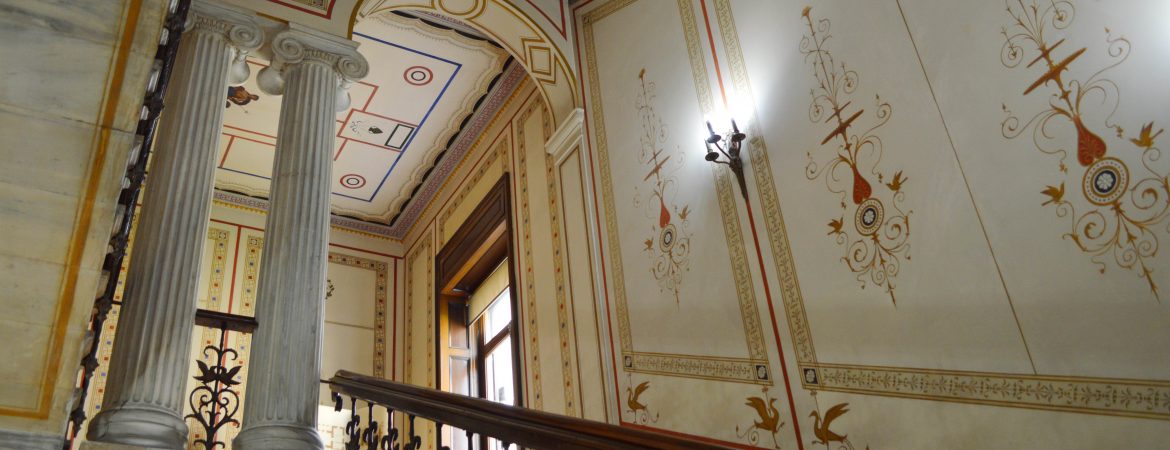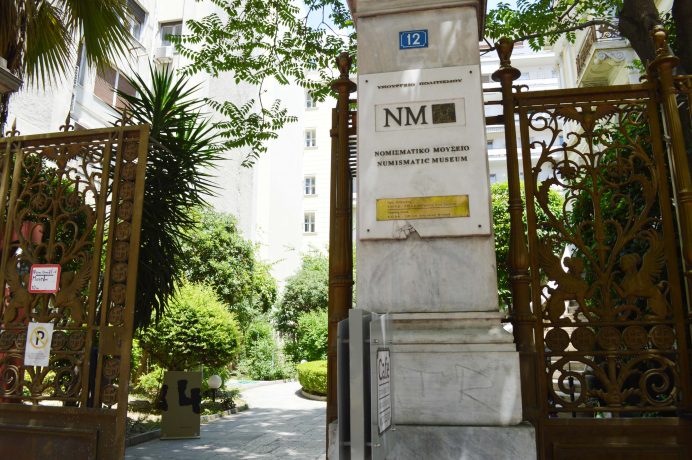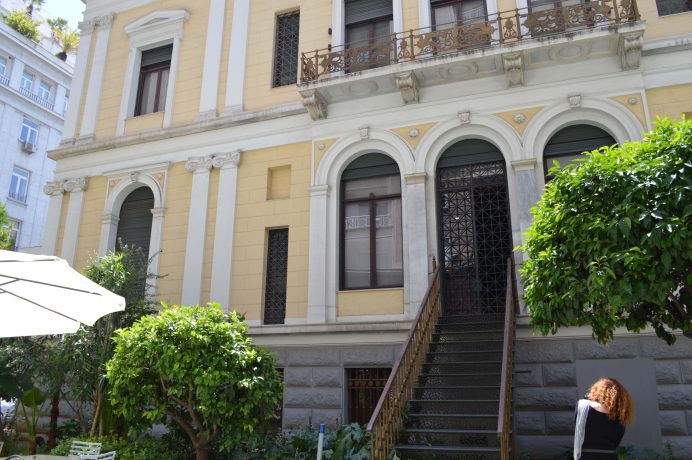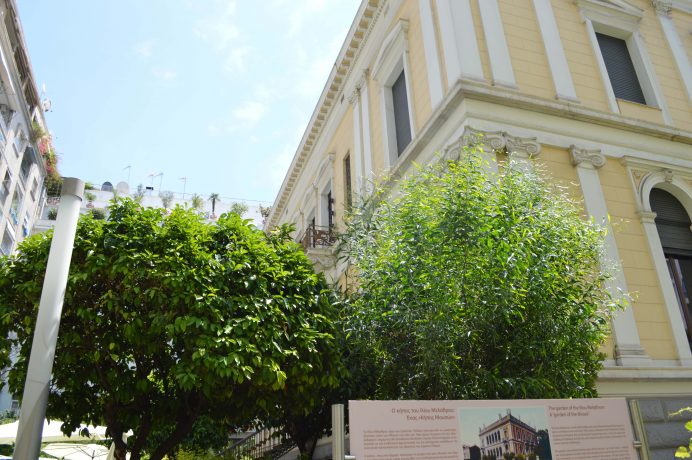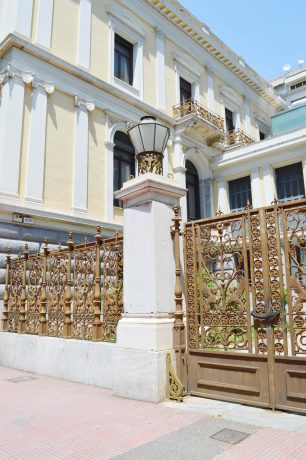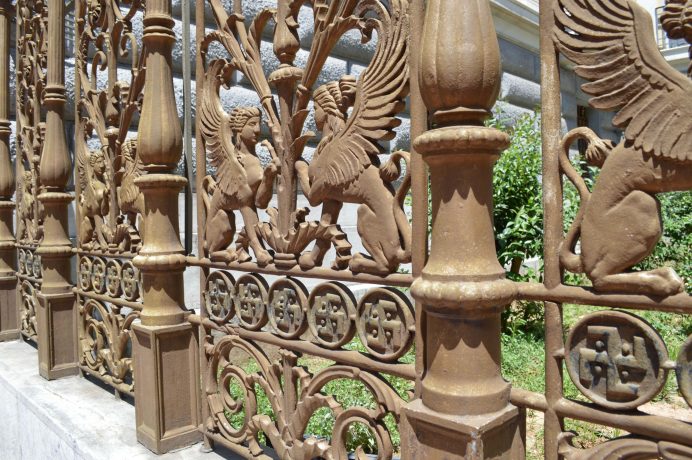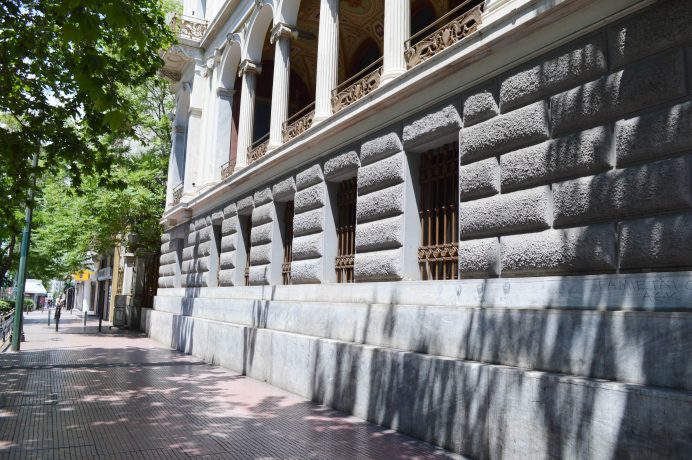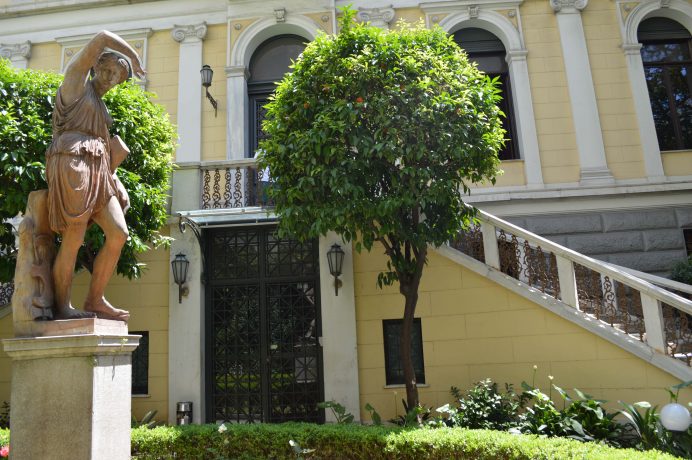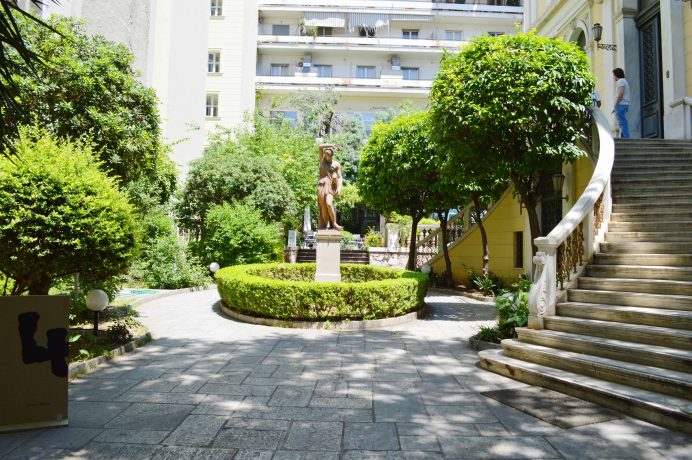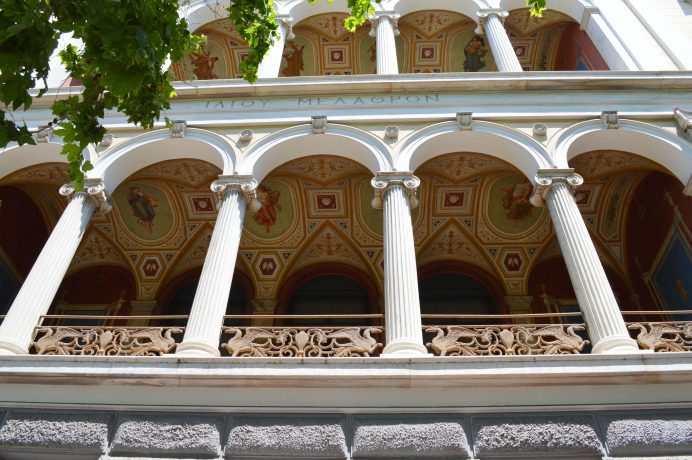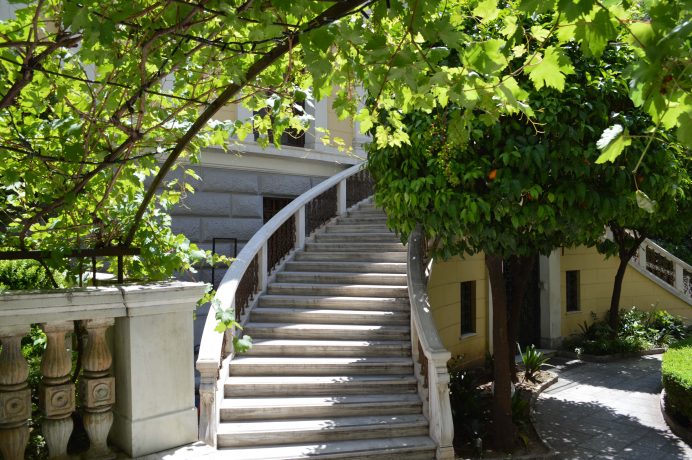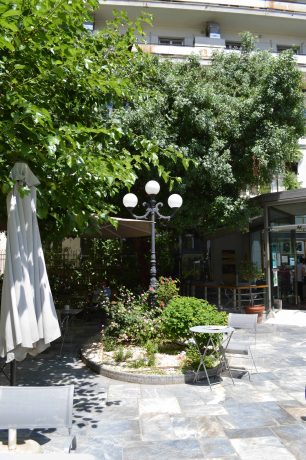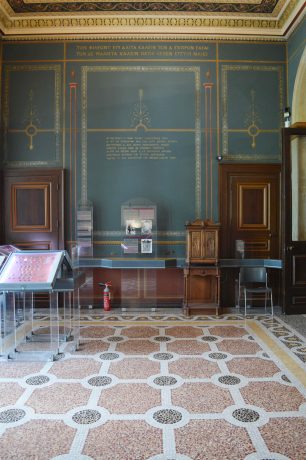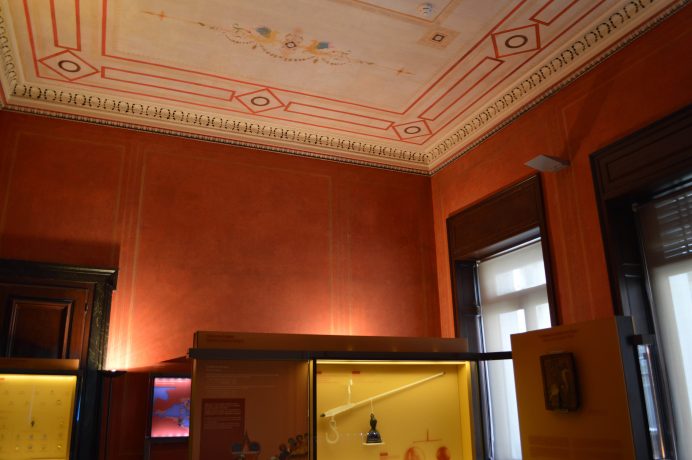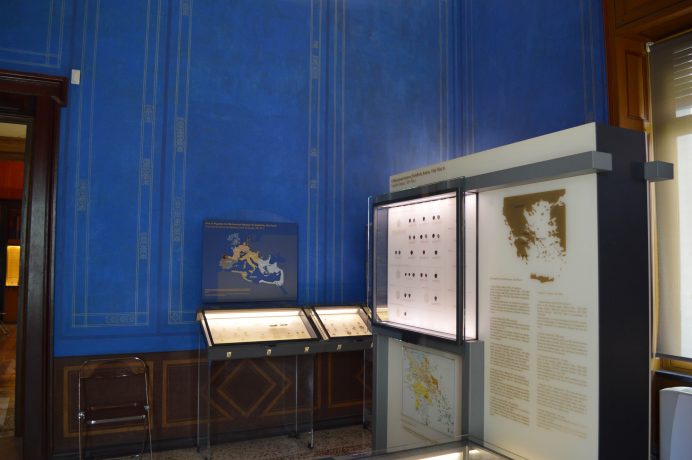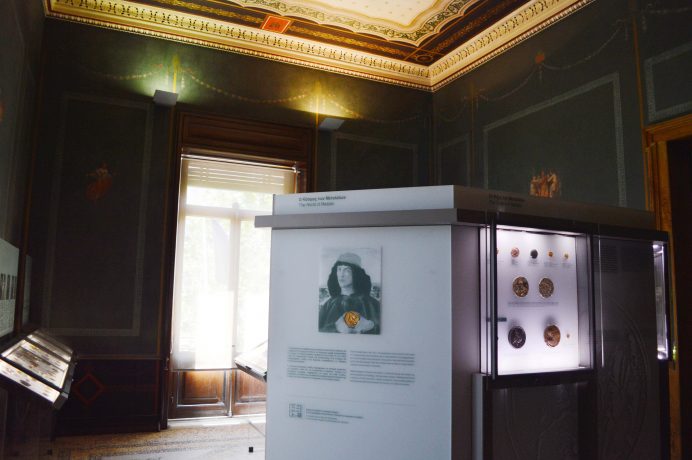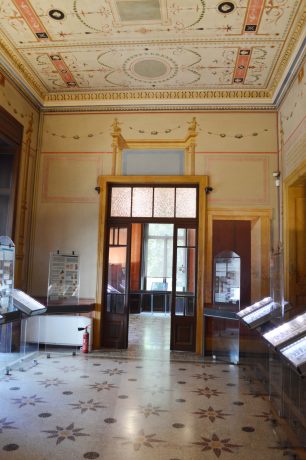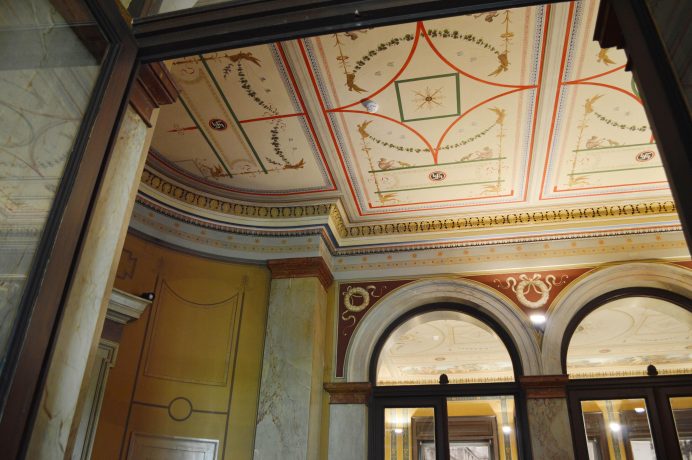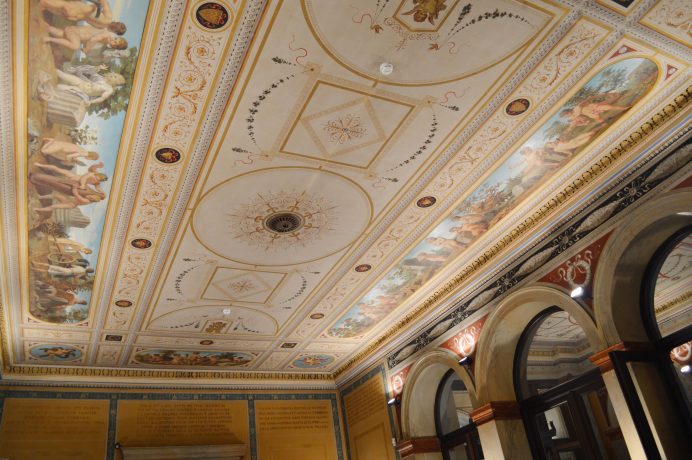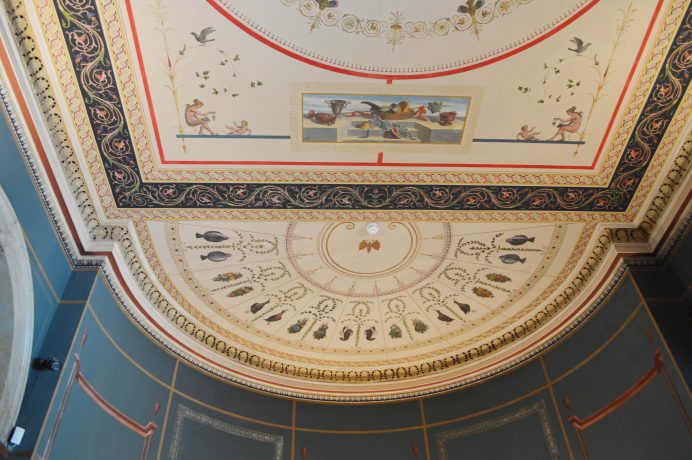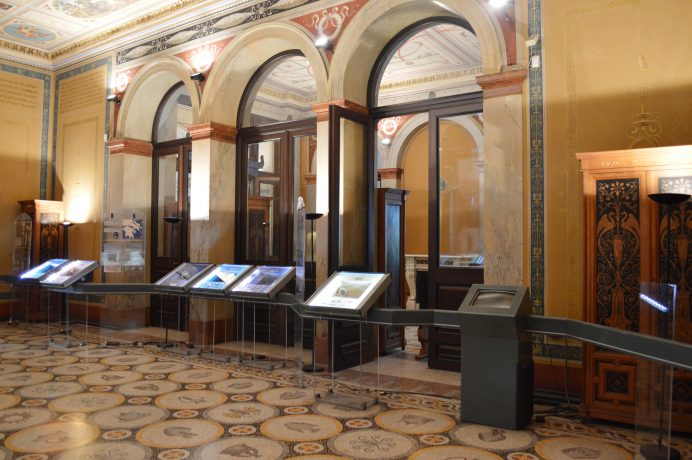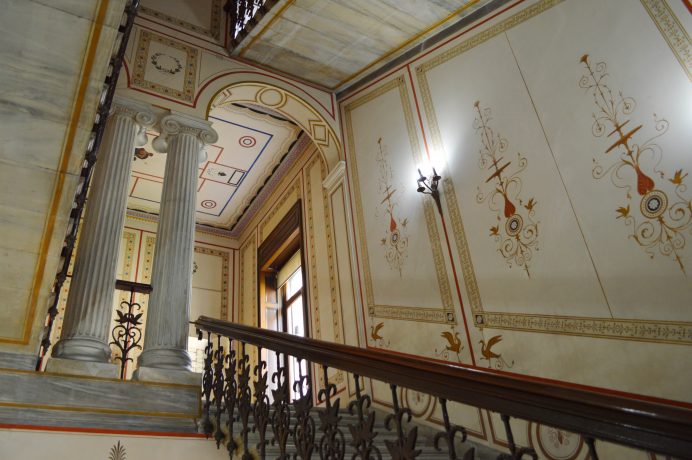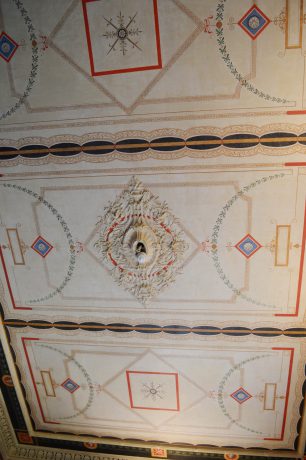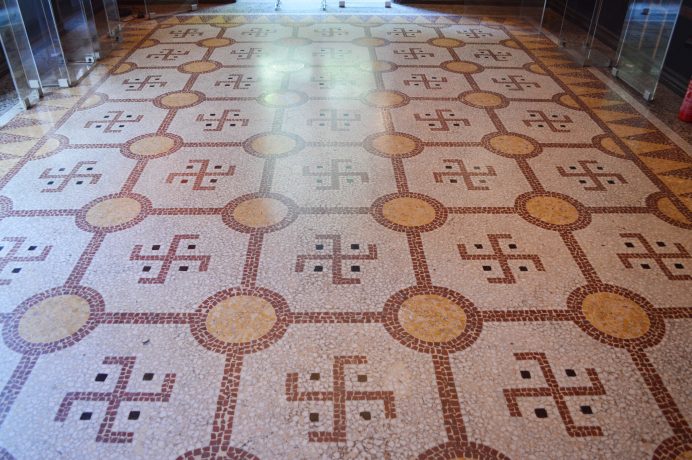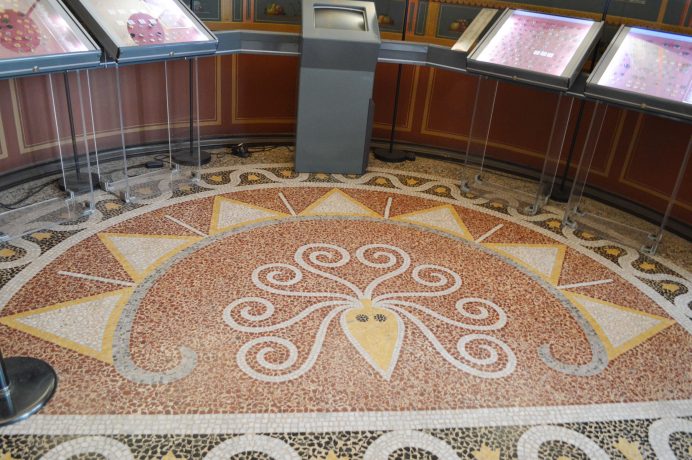Sometimes museums are defined by their collections and sometimes by their buildings. But what happens when you pair a magnificent building with a very interesting and unique collection? A museum gem. The Numismatic Museum of Athens falls into that category. A remarkable neo-classical building of historical significance houses the vast collection of coins and currencies from the antiquity up until today. And this match is made in heaven!
Established in 1834, the Numismatic Museum is one of the oldest museums in Greece alongside the National Archaeological Museum which was established the same year. At first it was housed in the National Library, then in the Athens Academy and later in a wing of the National Archeological Museum. In 1984, the museum was given the Iliou Melathron mansion by the Ministry of Culture. However, the complete exhibition opened in 2007 due to restoration works on the building, its murals and mosaics.
The Iliou Melathron was built in 1879 and designed by Ernst Ziller. He was a Saxon architect who relocated to Athens as an assistant to Theophil Hansen to supervise the construction of the Athens Academy. He has designed many important Athenian buildings such as the National Theatre of Greece and the Presidential mansion. His buildings resemble the ones that can be found in Vienna, combining Ancient Greek, Roman and Renaissance elements. The incorporation of renaissance elements can be seen in the balconies on the front. Although it is one of the most imposing buildings in Athens, oddly it seems light and elegant.
The mansion was used as the residence of the archaeologist Heinrich Schliemann and his family. Its name, Iliou Melathron, which means “Palace of Troy”, is a reference to the archaeologist’s discovery of Troy- Ilium, among excavations of Mycenae. In 1926, the building was sold to the Greek state and housed the State Council, the Supreme Court and the Court of Appeals. Eventually in 1983, it was given to the Ministry of Culture to house the Numismatic Museum.
The building consists of two storeys. The first floor (or the entrance level) used to be a welcoming space for visitors - the salon, the dining room and the guest room were located there as well. In addition, there was a hall with artifacts from excavations. The second floor housed bedrooms, offices and a library. The museum has a small but beautiful garden with a cafe.
The building is an example of the excellent work of Ernst Ziller. For its time, it was technologically advanced, had a ventilation and a heating system. It was also protected from fire since wood was only used for windows and doors.
The building is of high artistic importance. Throughout the mansion, you can find ceiling-paintings and wall-paintings. These were created by Slovenian painter Jurij Subic who mainly worked in Vienna and Paris. The inspiration for the decoration was drawn from paintings found in Pompey and works of ancient Greek writers like Homer. The mosaic made by Italian artists depicts motifs seen on Schliemann’s excavation-found artefacts. Lastly, the statues decorating Iliou Melathron are terracotta copies made in Vienna. This blending of styles has given the building its one of a kind personality.
Interestingly, the collection changed location while the building changed its utility. While both being important and astonishing, we're sure the building will be the one to steal your heart. From the calming garden to the murals and the mosaics of the rooms, this mansion will take your breath away.
